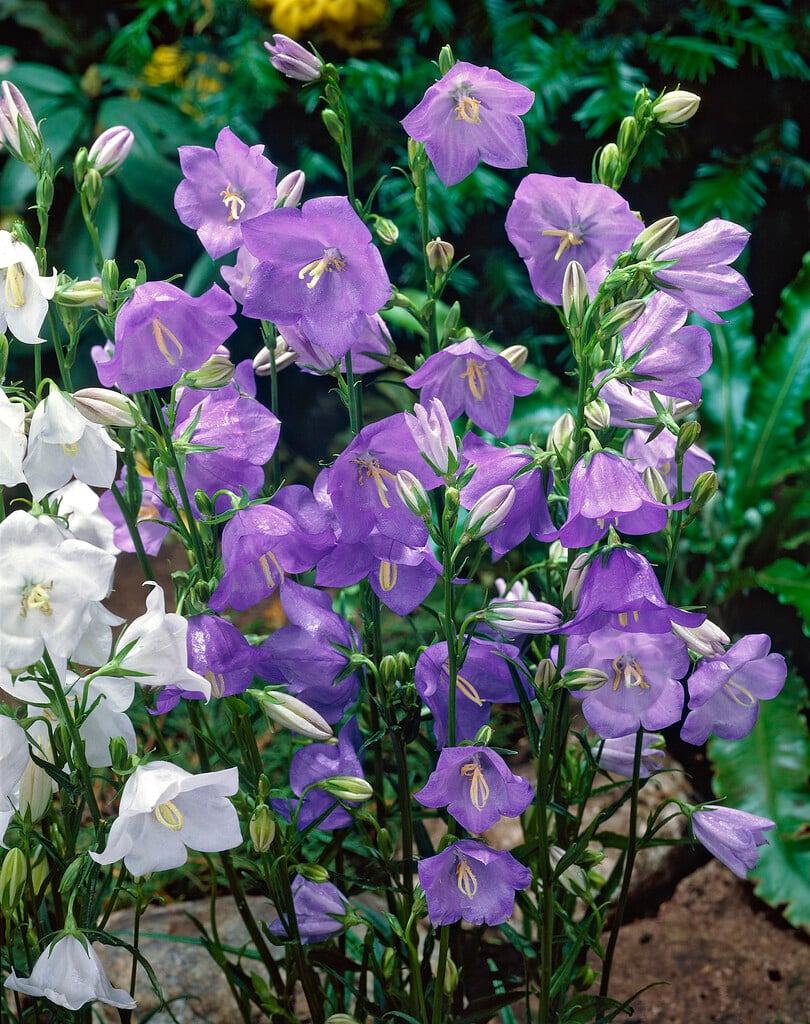Campanula persicifolia
peach-leaved bellflower
A rosette-forming perennial with narrow, evergreen basal leaves. Loose spires of outward-facing, cup-shaped, lilac-blue flowers appear in early and mid-summer
Synonyms
Campanula amabilisCampanula subpyrenaica
Size
Ultimate height
0.5–1 metresTime to ultimate height
2–5 yearsUltimate spread
0.1–0.5 metresGrowing conditions
Moisture
Moist but well–drainedpH
Alkaline, NeutralColour & scent
| Stem | Flower | Foliage | Fruit | |
| Spring | Green | |||
|---|---|---|---|---|
| Summer | Blue | Green | ||
| Autumn | Green | |||
| Winter | Green |
Position
- Full sun
- Partial shade
Aspect
North–facing or East–facing or South–facing or West–facing
Exposure
Exposed or Sheltered Hardiness
H7Botanical details
- Family
- Campanulaceae
- Native to GB / Ireland
- No
- Foliage
- Evergreen
- Habit
- Clump forming
- Genus
Campanula may be annuals, herbaceous or evergreen perennials, with bell or star-shaped, often blue, flowers in late spring or summer
- Name status
Correct
- Plant range
- W Eurasia
How to grow
Cultivation
Best grown in fertile, neutral to alkaline soil that is moist but well-drained; in partial shade or sun. Needs staking in exposed sites - see staking perennials
Propagation
Propagate by division in spring or autumn or take basal cuttings in spring
Suggested planting locations and garden types
- Cottage and informal garden
- Wildlife gardens
- Underplanting of roses and shrubs
- Cut flowers
- Flower borders and beds
Pruning
Cut back after flowering to prevent self-seeding and to encourage a second flush of flowers
Pests
Diseases
May be infected by a rust, powdery mildews and a leaf spot
Love gardening
Sign up to receive regular gardening tips, inspiration, offers and more
View our Privacy Policy
Get involved
The Royal Horticultural Society is the UK’s leading gardening charity. We aim to enrich everyone’s life through plants, and make the UK a greener and more beautiful place.

